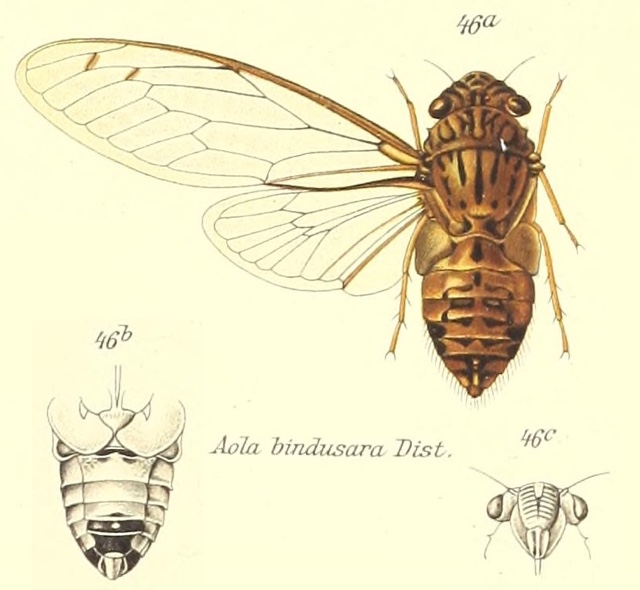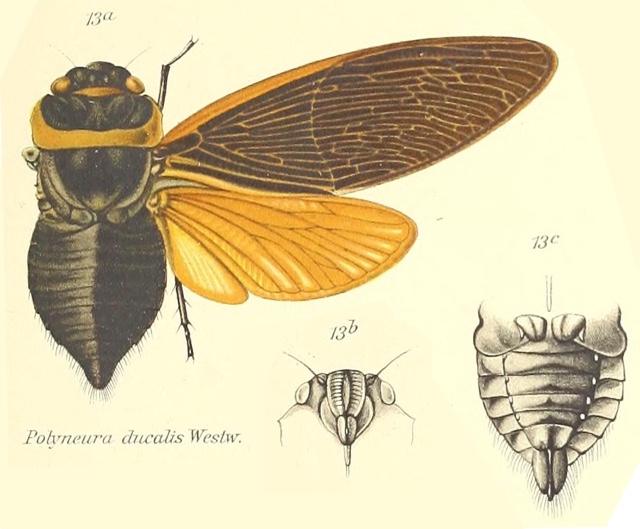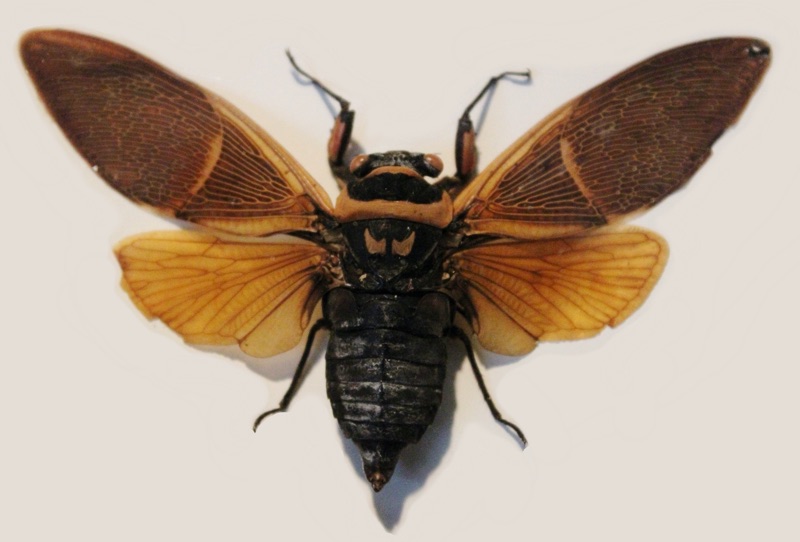Haphsa bindusara (Distant, 1881) was formerly known as Aola bindusara.Yes, its name has changed since 1913. Aola is no longer a genus, although the subtribe is still the similarly named Aolaria.
This cicada is found in Burma.
Scientific classification:
Family: Cicadidae
Subfamily: Cicadinae
Tribe: Dundubiini
SubTribe: Aolaria
Genus: Haphsa
Species: Haphsa bindusara (Distant, 1881)

The image says Aola bindusara but this cicada is now known as Haphsa bindusara.
References:
- The illustration and genus description comes from the journal Genera Insectorum, and a specific article from 1913 by W. L. Distant titled Homoptera. Fam. Cicadidae, Subfam, Cicadinae. Read it on the Biodiversity Heritage Library website.
- Species name information/verification comes from Allen Sanborn’s Catalogue of the Cicadoidea (Hemiptera: Auchenorrhyncha).

